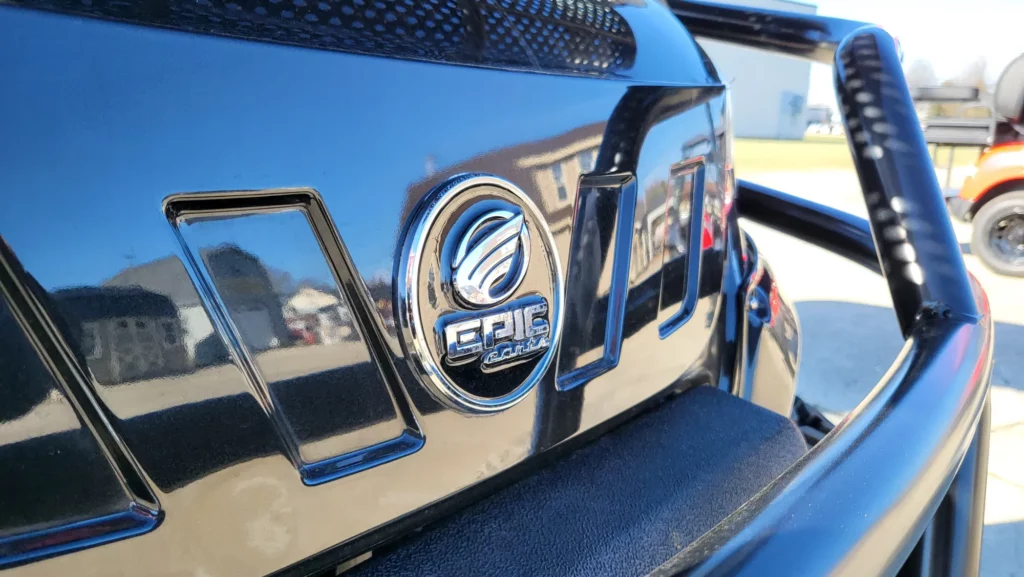Are you thinking of becoming the proud new owner of a golf cart? Have you ever wondered: “Are golf carts gas or electric?”. The answer to that question is yes. There are both electric and gas-powered golf carts. The one you choose is a large factor in your ownership experience. In today’s blog, we will look into the key differences to help you decide which option suits you best.

Overview of Golf Carts and their Popularity
Golf carts have become increasingly popular both on and off the golf course in recent years. These small, electric vehicles are an efficient and eco-friendly mode of transportation, often used to travel short distances. While they were originally designed for use on golf courses, golf carts are now commonly used in gated communities, retirement homes, and large events like festivals and concerts. Many people also use them for personal transportation on their own property. Whether you’re cruising through the fairway or zipping around your neighborhood, there’s no denying the versatility and convenience of a golf cart.

The Different Types of Golf Carts
Golf carts come in a variety of shapes and sizes, each with its own set of features and functions. Some carts are designed for use on golf courses, while others are ideal for transportation around gated communities or campuses. One type of golf cart is the standard gas-powered model, which is typically larger and more powerful than electric carts. Electric golf carts are environmentally friendly and operate quietly, making them a popular choice for residential areas. Specialized golf carts, such as long-bed carts and utility carts, are used for maintenance or landscaping tasks on golf courses. No matter what your needs may be, the different types of golf carts offer a range of options to suit your unique requirements.

Electric vs. Gas-Powered Golf Carts
Electric golf carts are known for being eco-friendly. They are quiet to drive and therefore the go-to for residential use. Electric golf carts also require less maintenance than gas-powered golf carts. This is because they have no emissions systems and fewer moving parts overall. A downside here is that they do not have the range that is available from a topped-off gas golf cart. It’s also faster to refill a gas tank than it is to recharge a large battery system. This can help make the decision easier depending on your daily driving needs for the golf cart.
Gas-powered golf carts offer not only better range but more torque and power. This is something useful to consider if the load on the cart is heavy or if it is commonly used on rough terrain. One downside could be the pollutants and emissions from gas engines. This obviously becomes a personal preference but should be noted. The choice between gas or electric should be based as much on the use case and your own needs as much as possible. Once you have those bases covered, then look at personal preferences.
Advantages and Disadvantages of Electric Golf Carts
Electric golf carts come with their own set of advantages and disadvantages. On the one hand, they are an environmentally-friendly option compared to gas-powered carts, emitting less noise and pollutants. They’re also less expensive to operate in the long run, as they require less maintenance and no need for fuel. Additionally, greener golf courses may have incentives for using electric carts over traditional gas ones. However, on the downside, electric golf carts have shorter ranges and can take longer to charge, making it difficult to use them on longer courses. Moreover, they require a specialized charging station or equipment, which can be a disadvantage in remote or rural areas. Weighing both the pros and cons of electric golf carts are important in deciding which option is best for golfers, course owners, and the environment.

Advantages and Disadvantages of Gas-powered Golf Carts
Golf carts have become a popular mode of transportation on the course, and there are two types of golf carts that one can use: electric and gas-powered. While electric golf carts are widely adopted, gas-powered carts still have advantages and disadvantages that are worth considering. On the one hand, gas-powered carts are faster and can cover more distance than electric ones. Additionally, they are quieter and safer to operate compared to older models. However, they also produce harmful emissions and can be more expensive to maintain. It is important to weigh the pros and cons of gas-powered golf carts before deciding whether to use one on the course.

Buying a Used Golf Cart
Regardless of which choice you make for engine type, if you are buying a used golf cart, inspect it thoroughly! Look over every inch for signs of wear and tear. 100% of used golf carts have some form of wear and tear. Before you make the decision to take one home, make sure you know the good, bad, and the ugly. Check the tire tread depth, check the brake pads, check the brake lights, headlights, etc. You never find good surprises when you get home with your used golf cart. If you know about any issues ahead of time you can most likely work something out with the dealer so that you are not out of luck and fully responsible. While normal wear and tear will exist, you just want to protect yourself from the major issues that could affect performance and reliability.
Conclusion: Which Is Right for You?
So, are golf carts electric or gas? They both exist and they both provide great options to those interested in purchasing a golf cart. What helps people land on one side of the fence or the other is how they plan to use the golf cart. Electric golf carts are quieter, eco-friendly, and easier to maintain. Gas-powered carts offer more power, range, and quicker refuel times. Considering your needs and then your preferences in that order will leave you with the perfect golf cart every time.








